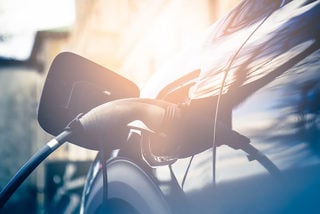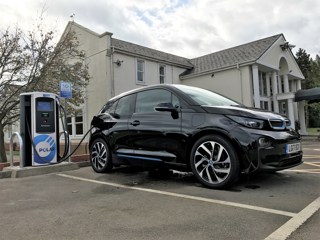Fleet decision-makers should ensure plug-in vehicles are ‘fit for purpose’ before replacing diesel or petrol cars and vans.
That was the message from a panel of experts discussing the merits of running a low emission fleet in the debate zone on day one of Company Car in Action (CCIA).
Ben Wicks, senior campaigns manager for Go Ultra Low told delegates there was a large level of Government support and incentives available for fleets wanting to make the switch.
However, he stressed it was important that they first identified the opportunity; understood the costs; considered how electric alternatives performed in day-to-day operations; and worked with drivers to establish acceptance of the technology.
A fleet audit, conducted by the likes of the Energy Saving Trust, would shed light on a particular fleet’s suitability, he said.
Phil Eaves, director of supply chain at Farmdrop, told delegates that load capacity has been his biggest problem.
Running a 32-vehicle fleet consisting of 18 Nissan e-NV200s, 12 Renault Kangoo Maxi ZEs and two diesel Mercedes-Benz Sprinters, he said that the firm’s use of plug-in vehicles reflected the firm’s sustainable ethos.
However, he added: “It’s now highly likely we’re going to have to take on non-electric vehicles to accommodate an increase in deliveries.
“We’re still fully committed to electric vehicles and when bigger, more suitable vans become available, assuming the financials work, we will adopt them.”
Eaves said the industry had been “slow to respond to demand” in the van market, illustrated by the fact that there are currently just nine plug-in vans qualifying for the plug-in grant, compared to 38 cars.
Meanwhile, Lorna McAtear (pictured) from Royal Mail, which recently adopted 100 plug-in Peugeot Partners, told delegates that she knew the technology would work through a series of trials, but what she wasn’t sure about was the charging infrastructure required.
She also highlighted how serious consideration needed to be given how and where vehicles were being charged, and whether the power supply was adequate. “Buying the vehicle was the easy bit,” she said. “Going electric for us has been quite a challenge.”























Login to comment
Comments
No comments have been made yet.